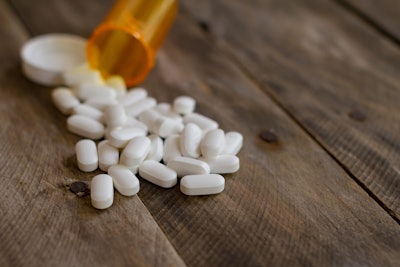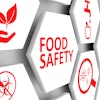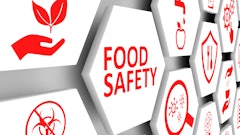
Many Americans think the opioid crisis does not concern or affect them. However, this now three-decade-long public health crisis begs otherwise. Between 2011-2021, the Journal of the American Medical Association (JAMA) Psychiatry reported more than 321,000 children lost a parent to an overdose. A study by the RAND Corporation in late 2024 highlighted that 40% of Americans know someone who died of a drug overdose.
Opioids are an equal opportunity destroyer of hope, dreams, and lives. Tragically, overdoses extinguish the lives of lost ones affecting families, communities, and workplaces. Every employer and family must become aware of the real hazards of opioids and other substances. Likewise, every employer and family are advised to learn prevention strategies to reduce the risk of overdoses.
Prevention strategies for families
1. For families with young children, an easy first step is to ensure the proper storage of prescription medications. This includes storage of all prescription medications on high shelves or in medication lockboxes.
2. If a family member receives recurring refills of high doses of opioid pain management for chronic pain, consider requesting naloxone (or Narcan) be co-dispensed in case of accidental overdose.
3. Ask medical professionals about alternatives to opioid pain management for medical, dental, and surgical procedures. Ask providers if multi-modal pain management consisting of staggering doses of non-opioid pain management is suitable for your personal health risk factors and the procedure being performed. If opioids are prescribed, consider requesting naloxone (Narcan) to be co-dispensed in case of an accidental overdose.
Prevention strategies for employers
- Consider the benefits of adopting the No Shame Pledge from SAFE Project as a means of beginning to educate all employees about substance use prevention and stigma reduction. The Pledge helps those seeking to address substance misuse leading to addiction treatment and recovery.
- Stock naloxone in company workplace locations and provide training for supervisors on the signs and symptoms of an overdose, as well as how to administer naloxone/Narcan. A 5-minute and 30-minute version of opioid overdose reversal training is available from SAFE Project.
- Employers are encouraged to review workers compensation injury reports to identify operations and work practices with high potential for musculoskeletal injuries. Expand injury prevention to reduce the frequency and severity of soft tissue sprain and strain injuries. For employers not yet instituting warm-up exercise programs, this is an effective way of decreasing exposure to sprains/strains.
- Provide basic education on opioids to employees in safety toolbox talks or in conjunction with daily safety huddles. Educate employees about the risks of opioids and the availability of alternative pain management products and products and other first dose prevention strategies. Reinforce the importance of everyone becoming an advocate for themselves and their family members scheduled for any medical, surgical, or dental procedures to minimize unnecessary exposure to opioids.
- Leaders of employer- and union-sponsored employee benefit health plans should learn about the risks of opioids in medical, dental, and surgical procedures. Ask providers about alternatives to opioids for pain management. In addition, asking about enhanced recovery surgical procedures that combine personalized nurse care management and patient advocacy.
- Identify resources and services available to employees and family members seeking support for substance misuse addiction treatment and recovery. This includes understanding the resources and services available from company- or union-sponsored employee health benefits programs, including Employee Assistance Programs (EAPs) or Member Assistance Programs (MAPs).
- An increasing number of employers are sharing information about recovery programs, including 12-step programs. Peer support programs are gaining traction in many industries.
CLICK HERE to read Part 1: how the opioid crisis affects the food logistics sector.
Deactivation and at-home disposal of leftover prescriptions
One of the easiest and most effective ways to protect your workers and their families from addiction or the misuse of prescription drugs is to assist them in destroying unused medications that remain in their homes. According to the Centers for Disease Control, nearly 90% of all post-surgical opioid prescriptions go unused and remain available in a home for misuse or even diversion from someone who was not originally prescribed the medication.
A July 2022 study in the Journal of the American Medical Association concluded that there is a 60% greater chance of an overdose by a non-prescribed member of a household where an opioid has been prescribed to another member of that household. The household risk increased by 625% for the second and subsequent opioid prescription. The most likely victims of these medications are children. Every year, over 1,500 children misuse opioids that have not been prescribed to them. Teenagers report that the number one source for prescription drugs is their parents’ medicine cabinet because the drugs are readily available.
This beckons a call to action for at-home drug deactivation and disposal. Several simple products can destroy medications and allow for safe disposal into your home garbage. Increasingly, employers are distributing these at-home deactivation and disposal products to employees during education sessions on opioid safety. These products take a deadly risk of leftover medications and create a disposable product that is safe to others, reduces drug exposure to the environment, and acts as a deterrent for misuse.
Conclusion
The opioid crisis is real. Overdoses continue to adversely impact the working-age population and retirees. Workplaces and workforces continue to feel the effects of the overdose crisis. Employees and family members remain at risk from opioids for both on- and off-the-job injuries. Employers in all industries are encouraged to learn about opioid awareness and first-dose prevention strategies.

















